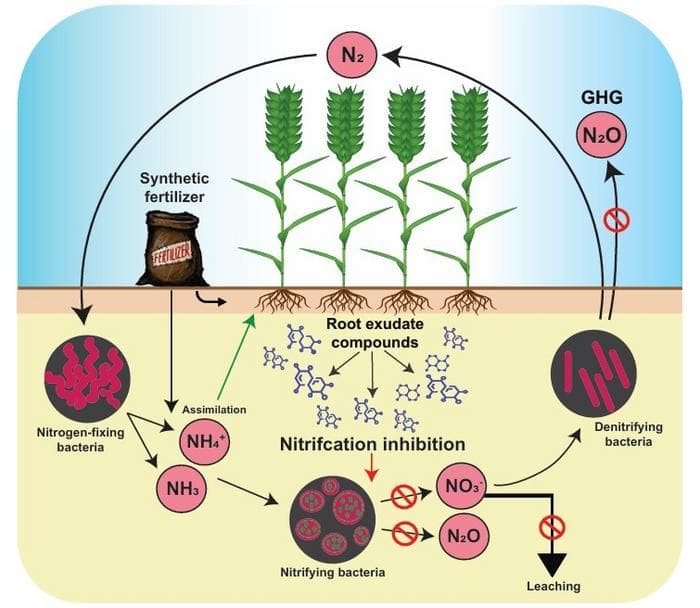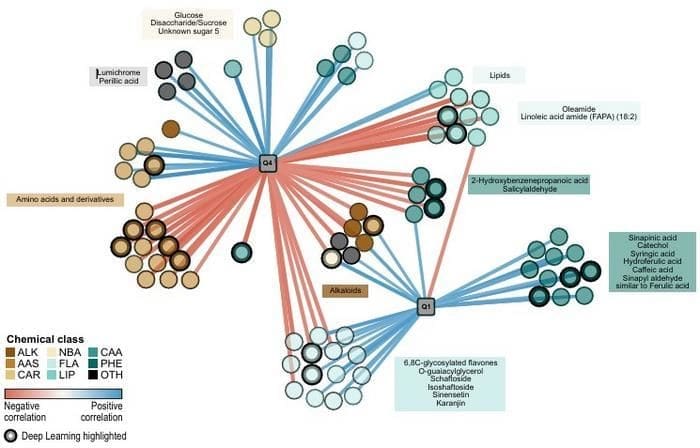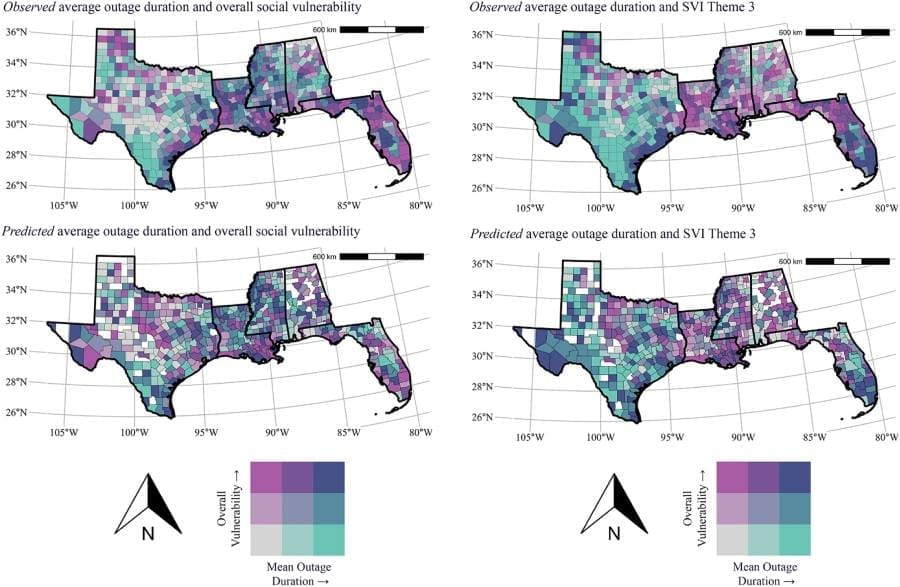Explore the latest insights from top science journals in the Muser Press daily roundup (July 23, 2025), featuring impactful research on climate change challenges.
In brief:
Stringent environmental regulations may undermine climate goals and renewable energy production, study finds
Contrary to widely accepted approaches that prioritize regulatory stringency as the primary tool for climate mitigation, the study highlights the pivotal role of digital governance and the circular economy in enhancing renewable energy output and addressing climate challenges more effectively.
Digital governance refers to the effective and responsible utilization of digital resources by organizations to achieve strategic objectives. In the context of the circular economy, organizations aim to optimize resource use by minimizing waste, and promoting the reuse and recycling of materials to extend their lifecycle.
This study, led by the University of Sharjah in the United Arab Emirates (UAE), in collaboration with academic peers in Jordan and Pakistan, examines the impact of digitization, the closed-loop economy, and regulatory rigor on environmental governance of renewable energy Production (REP) sources.
The authors note that their motivation stems from the observation that prior research has predominantly focused on traditional macroeconomic determinants of renewable energy production, often overlooking emerging factors such as digital government, circular economy, and environmental regulatory stringency.

They argue that although climate change and its consequences – particularly global warming – are pressing concerns for governments, industries, and the public, existing literature has largely remained confined to examining macroeconomic and environmental policy measures aimed at reducing emissions and mitigating climate impacts.
“However, the role of digital government, circular economy, and environmental regulation taxes on REP have not been adequately assessed,” the authors state. Their research, therefore, seeks to investigate the relationship between digital governance, circular economy practices, environmental regulation taxes, and renewable energy production.
To address this, the study employs three econometric techniques commonly used to handle complex data and endogeneity: Two-Stage Least Squares (2SLS), Generalized Method of Moments (GMM), and Smoothed Instrumental Variable Quantile Regression (SIVQR).
The authors’ analysis is based on extensive data collected from 27 European economies spanning the period 2010 to 2022, covering indicators related to renewable energy production, digital governance, circular economy, and environmental regulatory stringency.
The findings from the 2SLS and GMM models highlight the significant positive influence of digital governance and circular economy on REP. In contrast, environmental regulatory stringency does not exhibit a statistically significant effect.
Additionally, the study reveals that logistics performance, GDP growth, and digital financial inclusion contribute positively to REP, whereas natural resource rents and foreign direct investment (FDI) are associated with declines in REP.
Regarding the SIVQR results, the authors find that digital governance positively affects REP only at higher quantiles, while the circular economy demonstrates a consistent positive relationship across all quantiles. Conversely, environmental regulation taxes tend to negatively impact REP in most quantiles.
The authors present their findings as valuable contributions that offer practical guidance for policymakers on how digital governance, the circular economy, and regulatory stringency affect renewable energy development.
They urge policymakers to strengthen the integration of digital technologies in governmental operations, emphasizing that digitization plays a crucial role in facilitating the development and management of renewable energy initiatives. In this context, they urge policymakers to “provide incentives and create possibilities for … digital infrastructure development.”
Furthermore, the authors recommend that governments “should enhance digital literacy among energy professionals,” enabling them to effectively engage with emerging technologies. They also call on governments “to establish laws and regulations that must promote digital governance practices, which are vital in efficiently monitoring renewable energy projects.”
A key emphasis is placed on the incorporation of circular economy principles into renewable energy development (RED) policies. Policymakers are encouraged to design frameworks that align with circular economy ideals, while investors are advised to favor projects that embody these principles.
“The renewable energy sector can benefit from the circular economy principles by increasing the lifespan of renewable energy items and power plants,” they write.
The authors stress that governments should implement policies aimed at resource efficiency in renewable energy generation. This includes offering “incentives to entrepreneurs” who utilize recycled materials, design products for durability and reuse, and minimize waste throughout the production process.
“As a result, through digital governance, policymakers help develop an environment of transparency and accountability, building investor confidence and attracting funding for renewable initiatives,” the authors note.
Despite the significance of their findings, the authors candidly acknowledge “certain limitations” in their analysis. They caution that the results may be subject to bias due to the temporal and regional correlation among the 27 European countries included in the study.
Another limitation they highlight is the geographic scope of the research, which is confined to European economies. They note that these countries differ significantly from those in Asia, Africa, and the Americas in terms of political systems, economic structures, institutional frameworks, and social contexts. As such, they recommend that future research undertake comparative analyses across these global regions to enhance the generalizability of the findings.
Article Source:
Ilhan Ozturk, Sana Ullah, Sidra Sohail, Muhammad Tayyab Sohail, ‘How do digital government, circular economy, and environmental regulatory stringency affect renewable energy production?’, Energy Policy 203, 114634 (2025). DOI: 10.1016/j.enpol.2025.114634
Article Source:
Press Release/Material by University of Sharjah
The Holobiont Revolution: How wheat is becoming more climate-resilient through nature-based plant breeding and machine learning
Nitrogen fertilizers used in agriculture contribute significantly to global warming. A new breeding concept, specifically for wheat, could help reduce nitrogen fertilization. This holobiont principle places the complex interactions between plants and soil microbiomes at the center of plant breeding. In combination with machine learning, this could lead to the use of new wheat varieties, as well as other crops, that are more resilient to climate change and contribute to soil health.

Two recent studies led by Wolfram Weckwerth from the University of Vienna have been published in the journals Plant Biotechnology and Trends in Plant Science.
To increase the supply of food and feed, intensified agriculture has increasingly relied on nitrogen (N) fertilizers. However, more than half of the nitrogen applied to croplands annually ends up lost to air and water. Such losses lead to serious issues, including air and water pollution, soil acidification, climate change, stratospheric ozone depletion, and biodiversity loss.
Consequently, reducing nitrogen loss from croplands could enhance economic returns by lowering fertilizer requirements, improve human health and ecosystem services, and contribute to mitigating climate change.
The holobiont concept: considering plants and microbes as a unit
Wolfram Weckwerth emphasizes that improving crop resilience and yield sustainably should not focus solely on plants but also on the microbiome surrounding their roots and leaves. Soil microbiomes also offer opportunities for enhancing soil fertility and reducing reliance on synthetic fertilizers.
He notes: “Plant evolution is largely driven by plant-microbe interactions, yet the ecology of the plant holobiont is not well understood at a molecular level. However, these relationships hold enormous benefits for sustainable agriculture. Therefore, it is crucial to identify plant varieties that produce natural nitrification inhibitors, also known as biological nitrification inhibitors (BNIs) which are exudates by the roots in the soil.”
Wheat as a natural way to slow down nitrogen loss
In a recent study, the international team investigated the potential of various wheat cultivars to produce BNIs that help control soil nitrification processes. They found a pronounced natural variation of BNI activity in different elite wheat lines.

“Our analysis of root exudates, complicated compounds released from the root system, shows substantial variation between the wheat cultivars,” explains Arindam Ghatak, first author of the study. “These exudates promote or inhibit specific microbiome compositions and allow the selection of strains with particularly high BNI activity.”
By cultivating these BNI-active lines, farmers could significantly reduce the need for nitrogen fertilizers in the future. This is a significant step to mitigate the disruption of the global nitrogen cycle caused by the overuse of anthropogenic fertilizer.
Data-driven plant breeding for a sustainable future
To effectively utilize this nature-based solution, an international team of scientists around Wolfram Weckwerth from the Molecular Systems Biology (MOSYS) Lab and the Archaea Biology and Ecogenomics Lab at the University of Vienna has developed a novel breeding concept.
Supported by partner institutions in Greece, Australia, India, Japan, Canada, the US, and Mexico the team places the holobiont concept at the center of modern plant breeding, focusing on the complex interactions between plants and soil microbiomes. Through an innovative data-driven approach, plant genetics, microbiome studies, and PANOMICS are integrated to generate high-throughput data.
“In combination with machine learning algorithms, this opens up a promising breeding platform to develop new crop varieties with high BNI potential, greater resilience to climate change, and improved soil health,” explains Weckwerth.
The holobiont concept thus marks a paradigm shift: it combines ecology, systems biology and breeding technology while highlighting the interconnectedness of ecosystems, and opens up new pathways toward resource-efficient and climate-resilient agriculture.
Journal Reference:
Ghatak, A., Kanellopoulos, A.E., López-Hidalgo, C., Malits, A., Meng, Y., Schindler, F., Zhang, S., Li, J., Waldherr, S., Ribeiro, H., Kerou, M., Hodgskiss, L.H., Dreer, M., Mir, R.R., Sharma, S., Bachmann, G., Karpouzas, D.G., Schleper, C., Papadopoulou, E.S., Chaturvedi, P. and Weckwerth, W., ‘Natural variation of the wheat root exudate metabolome and its influence on biological nitrification inhibition activity’, Plant Biotechnology Journal (2025). DOI: 10.1111/pbi.70248
Weckwerth, Wolfram et al., ‘Natural variation of the holobiont for sustainable agroecosystems’, Trends in Plant Science (2025). DOI: 10.1016/j.tplants.2025.05.006. Also available on ScienceDirect.
Article Source:
Press Release/Material by University of Vienna
320 million trees are killed by lightning each year
Lightning has a greater impact on forests than previously thought. Researchers at the Technical University of Munich (TUM) have developed new model calculations that, for the first time, estimate the global influence of lightning on forest ecosystems.
According to their findings, published in Global Change Biology, an estimated 320 million trees die each year due to lightning strikes. Tree losses caused by direct lightning-ignited wildfires are not included in these figures. In the future, lightning-induced tree mortality could rise due to an increase in flash frequency.
Lightning damage in forests is often hard to detect and has only been systematically studied in a few locations. Until now, it remained unclear how many trees worldwide die each year due to direct lightning-related damage. The TUM research team has developed the first method to estimate how many trees are so severely affected by lightning that they eventually die. Their conclusion: the ecological impact of lightning has been underestimated.

While earlier studies focused on field observations in individual forests, the TUM researchers took a mathematical approach. They extended a widely used global vegetation model by integrating observational data and global lightning patterns. “We’re now able not only to estimate how many trees die from lightning strikes annually, but also to identify the regions most affected and assess the implications for global carbon storage and forest structure,” explains Andreas Krause, lead author of the study and researcher at the Chair of Land Surface–Atmosphere Interactions.
The number of trees killed could increase in the future
According to their estimates, lightning kills about 320 million trees annually, accounting for 2.1 to 2.9 percent of all plant biomass loss annually. This biomass decay is estimated to emit between 0,77 and 1,09 billion tons of CO₂ annually. The researchers emphasize that these emissions are surprisingly high: they are comparable in magnitude to the approximately 1,26 billion tons of CO₂ released annually by the combustion of living plants in wildfires. However, the total CO₂ emissions from wildfires are substantially higher – about 5,85 billion tons per year – since they also include burning deadwood and organic soil material.
“Most climate models project an increase in lightning frequency in the coming decades, so it’s worth paying closer attention to this largely overlooked disturbance,” says Krause. “Currently, lightning-induced tree mortality is highest in tropical regions. However, models suggest that lightning frequency will increase primarily in middle- and high-latitude regions, meaning that lightning mortality could also become more relevant in temperate and boreal forests.”
Journal Reference:
Krause, A., K. Gregor, B. F. Meyer, and A. Rammig, ‘Simulating Lightning-Induced Tree Mortality in the Dynamic Global Vegetation Model LPJ-GUESS’, Global Change Biology 31, 6: e70312 (2025). DOI: 10.1111/gcb.70312
Article Source:
Press Release/Material by Technical University of Munich (TUM)
New study links power outages, social vulnerability in Gulf Coast
A new study shows how extreme weather and power outages can impact socially vulnerable populations in counties near the U.S. Gulf Coast. The researchers also estimated the 10 counties most and least likely to have long-term power outages in the five states that border the Gulf.
Findings showed that counties with vulnerable populations in terms of social, economic and demographic factors were often susceptible to longer-term outages. That was especially true along the Mississippi River, in Texas counties bordering the Gulf, in southern and central Florida and throughout Louisiana and Mississippi.
“Communities that are already struggling when a disaster strikes and then endure a long power outage – that can compound their problems,” said Smitha Rao, co-author of the study and assistant professor of social work at The Ohio State University. “We see this study as a conversation starter, a way to begin prioritizing which communities may need the most help both modernizing their electrical grid and recovering power after disasters.”
The study was published online recently in the journal Humanities and Social Sciences Communications.

The study is novel by combining power outage, disaster and social vulnerability information (from 2017 to 2022) at the county level in one of the most disaster-prone areas of the United States, said study co-author Shane Scaggs, an incoming President’s Postdoctoral Scholar at Ohio State.
“We didn’t just look at big disasters like hurricanes. Anything that knocked out power from just a few hours to days to weeks was included in our model,” Scaggs said. “Even short power disruptions can have a big impact on vulnerable communities.”
The study included information on outages and disasters for 482 out of 534 counties in the five-state region.
Findings showed that hurricanes/tropical storms and heat waves were associated with the longest power outages. Louisiana had longer power outages than the other states. Longer outages clustered in coastal and riverside counties, particularly along the Mississippi Delta and Florida coast. The researchers found that seven of the 10 counties predicted to have the longest outages were in Louisiana, all along the Mississippi Delta. Of the remaining three counties, one was in Texas and two were in Florida.
On the measure of social vulnerability, the 10 counties ranged from low to high levels, although most had midlevel to high levels of vulnerability.
“By mapping where social vulnerability and prolonged outages intersect following hazards, we can support decision makers and community leaders in identifying where investments and interventions are most urgently needed,” said study co-author Anaís Roque, an assistant professor of environmental social sciences at Duke University.
The 10 counties with the lowest outage durations were all in Texas, perhaps because more than half the counties in the study were in that state, Rao said. Just as in the counties with the longest outages, those with the shortest outages had a wide range of social vulnerability, from low to high.
“There wasn’t a simple correlation in which the most vulnerable counties were always the ones with the longest outages,” Scaggs said. “But the high-vulnerability communities might be more susceptible to harm from long outages because they already have limited capacity to adapt and recover from disasters.”
Rao said this study can help guide where to focus infrastructure investment, grid modernization and community discussions on emergency management.
“We identified the counties that were faring worse on both counts: higher levels of social vulnerability and longer power outages,” she said. “That may be where conversations can start about making improvements.”
Alexandria Asuan, an undergraduate research assistant who graduated from Ohio State in May, was also a co-author.
***
This research was supported by the Sustainability Institute at Ohio State.
Journal Reference:
Rao, S., Scaggs, S.A., Asuan, A. et al., ‘Power outages and social vulnerability in the U.S. Gulf Coast: multilevel Bayesian models of outage durations amid rising extreme weather’, Humanities and Social Sciences Communications 12, 912 (2025). DOI: 10.1057/s41599-025-05274-0
Article Source:
Press Release/Material by Jeff Grabmeier | Ohio State University (OSU)
Featured image credit: Gerd Altmann | Pixabay




